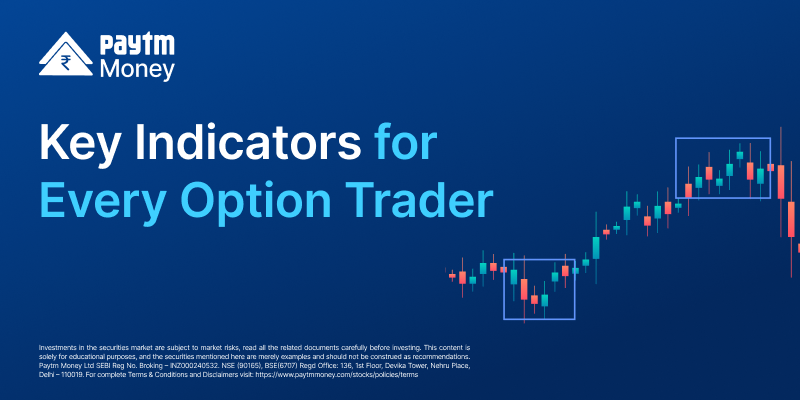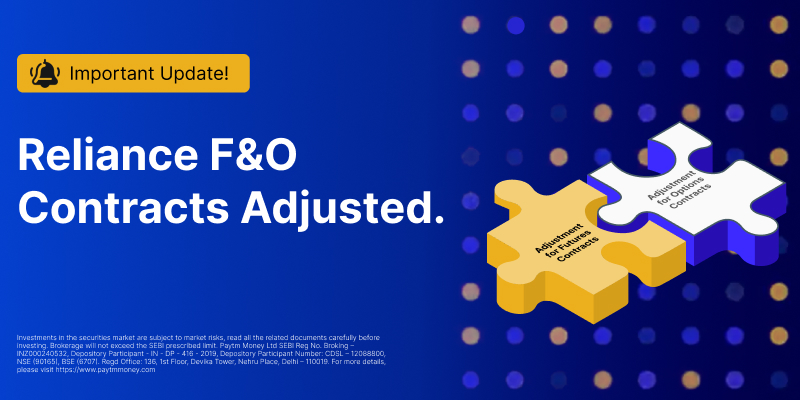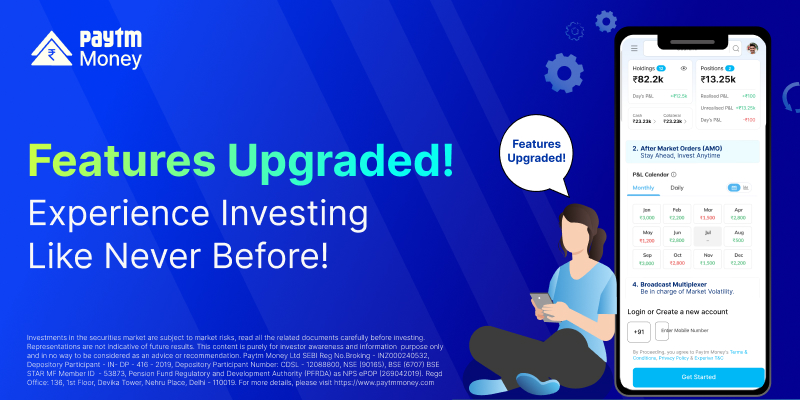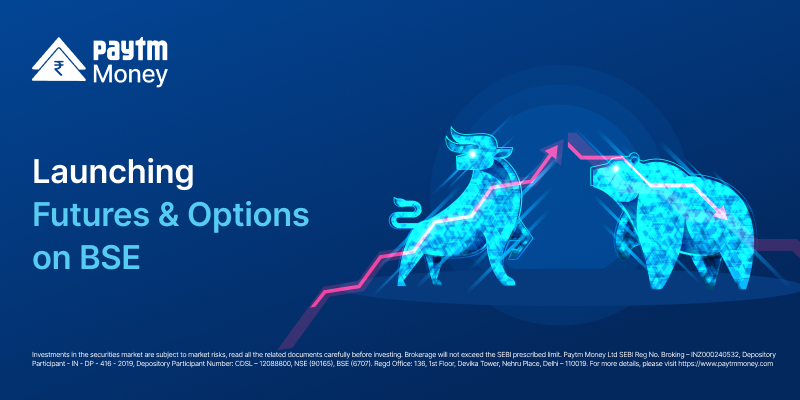7 Key Indicators You Should Understand Before Your First Option Trade8 min read
An option is a contract that provides the buyer the right to buy (call option) or sell (put option) a particular asset, at a specific price known as the strike price in the future. It is important to note that an option is not an obligation, and the buyer can choose not to exercise his/her right. The flexibility to change strategies before option expires, and the low premium amount makes option trading a favourite among many traders.
Before learning about the key indicators, it is essential that you are familiar with a few terms which will help you understand these indicators better.
- Strike Price – The strike price is the predetermined price at which the underlying asset can be bought or sold when exercising the option. It is the price at which the option holder has the right to buy or sell the underlying asset. For a NIFTY 18 MAY 18000 CALL Option, the strike price is 18000.
- Spot Price – The spot price is the price at which the underlying asset is currently trading in the market.
- Expiration Date – The expiry date is the deadline by which the option must be exercised or the positions taken in the options must be closed, otherwise, it becomes void. It determines the duration of the option contract. For a NIFTY 18 MAY 18000 CALL option, the expiration date is 18 May.
- Lot Size – A ‘lot’ signifies the minimum number of scrips you can buy or sell in an options trading contract. For example, the lot size for BANK NIFTY is 25. The lot size is revised frequently by the exchange and also depends on the asset class/ type.
- Call– A call option gives the holder the right, but not the obligation, to buy the underlying asset at the strike price within a specified period (until the expiry date). For example, if you purchase NIFTY 18 MAY 18000 CALL Option and the stock price rises to INR 18200, you can exercise the option and buy the stock at the lower strike price of INR 18000, thereby making a profit.
- Put– A put option gives the holder the right, but not the obligation, to sell the underlying asset at the strike price within a specified period. If you have NIFTY 18 MAY 18000 PUT option and the stock price drops to INR 17800, you can exercise the option and sell the stock at the higher strike price of 18000, thereby making a profit.
Now that you understand the basic terms, let’s move ahead and look at one of the most important things to consider before placing an option trade which is understanding and analysing market indicators.
Let’s take a look at the top seven indicators you should know and analyze before placing your first option trade:
1. Open Interest (OI):
Open interest refers to the total number of outstanding derivative contracts for a particular option in the market. It is an important indicator because it gives you an idea of how much interest there is in a particular option by tracking all the open positions for a contract.
Example- Let’s say you’re considering buying a NIFTY 04 May 17800 CALL Option. You notice that there is a high open interest in the option, which means that there are a lot of outstanding contracts. This can be a good sign as it suggests that there is a lot of interest in the option, which could lead to increased liquidity and tighter bid-ask spreads.

The open interest can be viewed under the OI tab in the Paytm Money’s Option Chain section. It is also visible in the default view or under the LTP tab, where it is represented by red and green bars. The red and green bars indicate the OI for a particular strike price of calls and puts. The longer the green/red bar, the higher the OI.
2. Implied Volatility (IV):
Implied volatility is the expected volatility of a stock over a specific period. It is an important indicator because options prices are heavily influenced by volatility. Supply and demand of the underlying along with the market’s expectation of the underlying’s price direction significantly influence the IV. As a result, understanding and analyzing implied volatility can help you make more informed decisions about whether to buy or sell options.
Example- Let’s say you’re considering buying a BANK NIFTY 11 MAY 43000 CALL. The implied volatility of the option is 10%. This means that the market expects the underlying to move up or down by 10% over the life of the option. If you think that the market is underestimating the potential volatility of the underlying, you might consider buying the option. On the other hand, if you think that the market is overestimating the potential volatility of the underlying, you might consider selling the option.
3. Delta:
Delta is a measure of how much an option’s price will change for every one-point move in the underlying. It is an important indicator because it can help you determine how much risk you’re taking on with a particular option.
Example- Let’s say you’re considering buying a NIFTY 04 May 17800 CALL Option. The delta of the option is 0.6. This means that for every one-point move in Nifty 50 price, the price of the option will move by INR 0.60. If you think that the Nifty 50 price is likely to go up, you might consider buying the option because it will give you exposure to that potential upside.

In the above screenshot, the highlighted column (CΔ) represents the call delta value for Nifty 50. The Put delta value is represented by PΔ. Call delta values are usually positive whereas put delta values are negative. This information can be accessed via the Greeks tab in the Paytm Money Option Chain.
4. Gamma:
Gamma is a measure of how much an option’s delta will change for every one-point move in the underlying stock. It is an important indicator because it can help you understand how much risk you’re taking on as the underlying stock price moves.
Example- Let’s say you’re considering buying a call option on BANK NIFTY 11 MAY 42000 CALL. The gamma of the option is 0.1. This means that for every one-point move in NIFTY BANK price, the delta of the option will change by 0.1. If you think that NIFTY BANK price is likely to be volatile, you might consider buying the option because it will give you exposure to that potential volatility.
5. Time Decay (Theta):
Theta refers to the gradual erosion of an option’s value as it approaches its expiration date. It is an important indicator because it can help you understand how much time you have to make a profit on a particular option.
Example- Let’s say you’re considering buying a call option on NIFTY 27 July 18000 CALL. The option expires in three months, and the time decay is INR 0.05 per day. This means that if you hold onto the option for the full three months, its value will decrease by INR 4.50. If you think that Nifty 50’s price is likely to go up significantly in the short term, you might consider buying the option.

Theta and gamma values are represented in the above screenshot for Nifty 50 and can be accessed via the Greeks tab in the Paytm Money Option Chain.
6. Volume:
Volume refers to the number of contracts that have been traded for a particular option during a specified time period. It measures the level of activity in a particular option and can be used to assess its liquidity. High volume indicates that there is a lot of interest in the option, while low volume may indicate a lack of interest or limited liquidity.
Example- Let’s say you decide to buy 100 shares of Nifty Financial Services at 19100, and your friend decides to sell 100 shares of Nifty Financial Services at 19100. This is a price and quantity match, which results in a trade. You and your friend together have created a volume of 100 shares.
7. Strike Price:
Strike price, also known as the exercise price, is the price at which the option can be exercised or bought/sold if the owner chooses to do so. It is predetermined at the time the option contract is created and is fixed for the life of the contract. The strike price is an important factor in determining the value of an option, as it affects the likelihood of the option being profitable.
Traders should invest time in understanding options, tracking popular choices, learning strategies and analysing market factors. It is crucial to note that writing or selling options can be extremely risky, potentially leading to significant losses if not understood properly. There are many indicators and tools available for analysing options trades, and it’s important to understand and use them to make informed decisions. Implied volatility, open interest, delta, gamma, theta, volume, and strike price are all important indicators to consider when evaluating options trades. By incorporating these indicators into your analysis, you can increase your chances of success in the dynamic world of options trading.
Disclaimer: Investments in the securities market are subject to market risks, read all the related documents carefully before investing. This content is purely for information purpose only and in no way to be considered as an advice or recommendation. The securities are quoted as an example and not as a recommendation. Brokerage will not exceed the SEBI prescribed limit. Paytm Money Ltd SEBI Reg No. Broking – INZ000240532. NSE (90165), BSE(6707) Regd Office: 136, 1st Floor, Devika Tower, Nehru Place, Delhi – 110019. For complete Terms & Conditions and Disclaimers visit: https://www.paytmmoney.com/stocks/policies/terms
Written By: Satyam Agarwal | APM- Paytm Money




